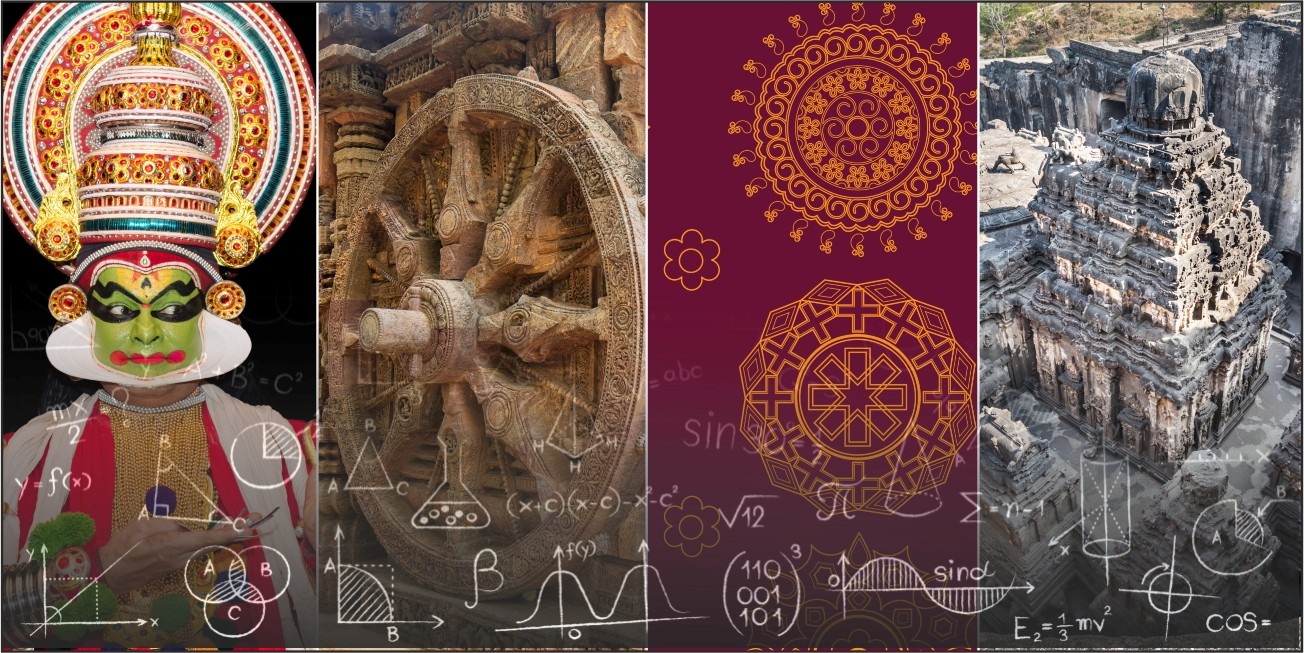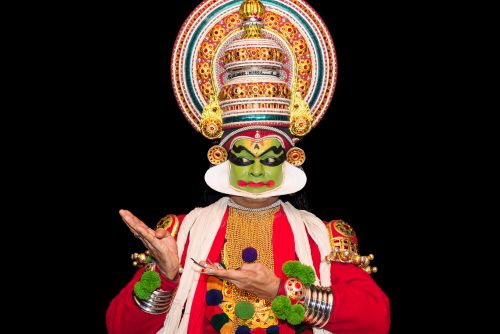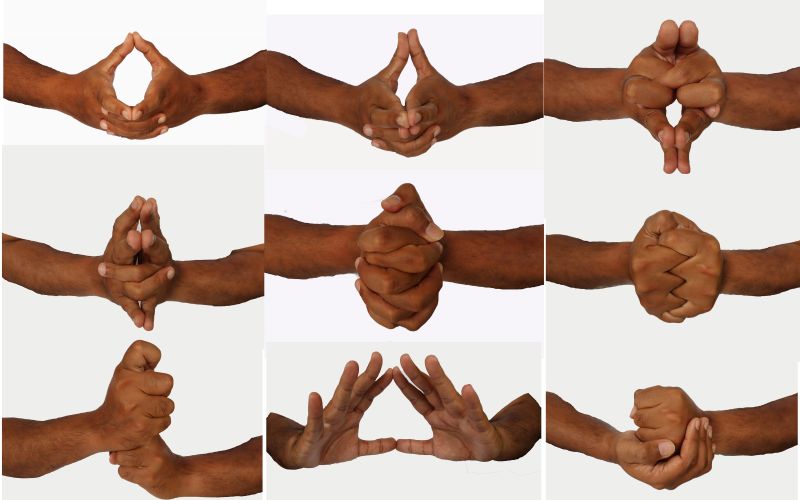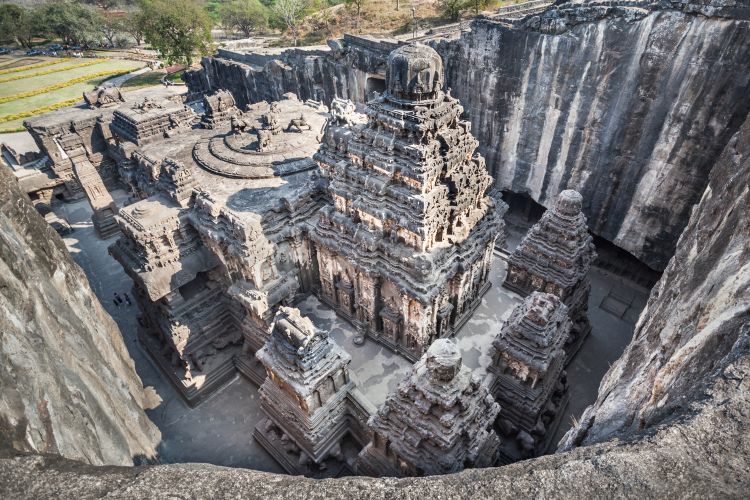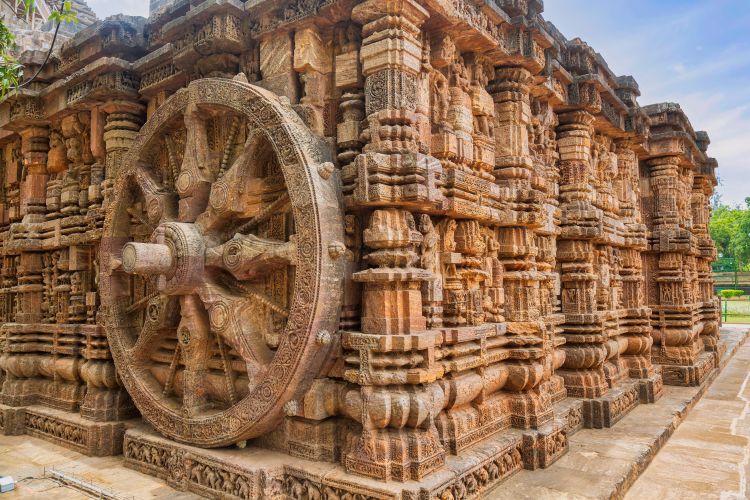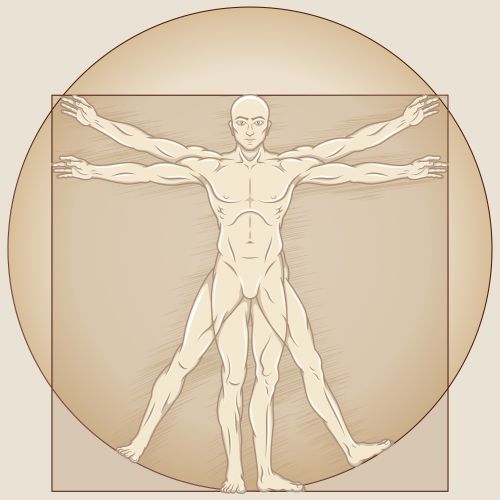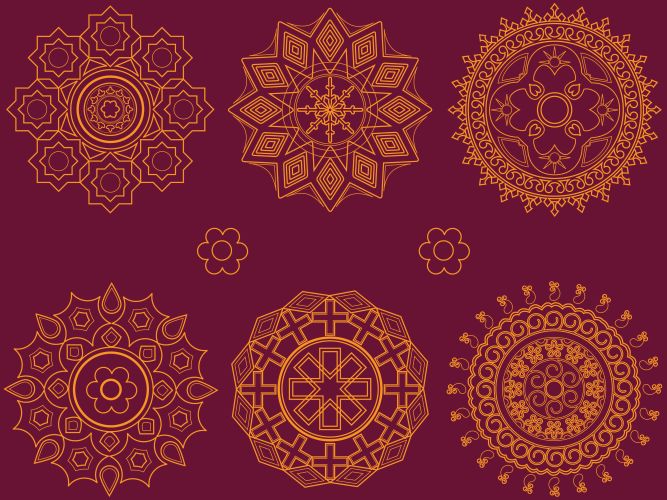![]()
Not all equations are written; some of them are drawn, painted, carved, and felt.
| In this article, you’ll read about: • Math and art: A universal language • Hidden geometry in Indian architecture • Kolam patterns and the Fibonacci connection • Mandala: The circle of logic • Folk art: Geometry in disguise • Why it matters: A perspective shift for educators • The power of applying geometry in art education • Artful ways to teach math • The future is digital and beautiful |
In a small school in Bhopal, a 14-year-old Shreyas was a backbencher. He quietly sketched patterns in the margins of his math book, anything to avoid the numbers that made him feel small.
But everything changed the day Dubey Sir introduced him to tessellations, first through M.C. Escher. Together, they explored rangoli designs, intricate tile patterns, and more. Shreyas started redrawing equations as designs.
His diagrams turned into mandalas, and the compass became his favourite tool. Today, he tops his class in geometry. The math book he once dreaded now holds spirals, repeating forms, and newfound confidence.
“Math stopped being scary,” he says, “when it started looking like art”.
………………………………………………………………………………………………………………
“Mathematics is the music of reason” – James Joseph Sylvester
Like music, Mathematics flows – structured yet expressive, precise yet poetic. Mathematics in art reveals itself through balance, rhythm, and proportions. Every recurring motif or spiral line is geometry in motion and an example of visual math concepts.
Using geometry in art education, teachers don’t just implement formulas or teach shapes. They offer students a new way to view the world.
Math and art: A universal language
At the National Museum of Mathematics (MoMath), symmetry is everywhere. From the layout of letters to patterns in body movement, visitors can explore different symmetry principles. This highlights that exploring symmetry through art opens up fresh, new ways to grasp patterns, movement, and meaning.
In Kerala, Kathakali makeup uses perfect bilateral symmetry, while Bharatanatyam dance in Tamil Nadu teaches more about angles and alignment with mudras. This is how math and art integration becomes a language.
Hidden geometry in Indian architecture
Sun Temple, Konark
Consider the Kailasa Temple in Ellora, Maharashtra. Carved from a single rock, the temple’s layout follows axial symmetry and proportions rooted in Vastu Shastra. If you look closely, the design of the Sun Temple in Konark aligns with astronomical events, including cosmic symbolism through precise stone placement.The 2023 Fractal Geometry and Its Application in Maharashtra’s Hindu Temple Architecture study by the International Journal of Civil Engineering and Architecture Engineering states that, symbolically, fractal-like patterns in Hindu temples represent spiritual transcendence, divine order, and cosmic cycles.
| Quiz Corner: The Sun Temple in Konark features 24 chariot wheels. What do they represent? • 24 mathematical theorems • 24 lunar cycles • 24 hours of a day ✅ • 24 seasons in Indian mythology |
Kolam patterns and the Fibonacci connection
We often associate the Fibonacci sequence in art with Da Vinci’s ‘Vitruvian Man”. However, identical spiral sequences appear in the Kolam designs made by women in South India. These symmetrical patterns, passed down through generations, echo complex math.
In the 2007 paper Fundamental Study on Design System of Kolam Pattern, two
researchers from Japan, Kiwamu Yanagisawa and Shojiro Nagata, studied kolam
designs and found that they could be turned into computer codes using patterns of 1s and 0s, just like in programming. This showed that kolams follow clear rules and repeatable steps, like algorithms in computer graphics or coding.
Mandala: The circle of logic
A mandala is a geometric art in its purest form. Designed from concrete shapes and symmetry, it is a tool for meditation and mathematics alike. Drawing mandalas can teach visual math concepts such as rotation, radius, and proportion.
| Quiz Corner: Which of these materials can be used to make a mandala? • Only pencil and paper • Just paint and canvas • Anything from flowers, sand, stones to colours ✅ • Only digital tools |
Folk art: Geometry in disguise
| Art forms | Math concepts | How it helps |
| Warli (Maharashtra) | Triangles, proportions | Strengthens understanding of shapes, sizes, and proportions. |
| Madhubani (Bihar) | Border patterns, tessellations | Helps understand repetitions, sequencing, and symmetry. |
| Mandana (Rajasthan) | Axial symmetry, repetition | Reinforces symmetry through hands-on visual exploration. |
| Kalamkari (Andhra Pradesh) | Geometry in storytelling layout | Allows students to understand spatial layout, scaling, and visual narrative. |
These are examples of math and art integration, linking culture with curriculum. When students draw Warli huts or Madhubani borders, they introduce a new form of storytelling.
| Quiz Corner: What do Warli huts and butterfly wings have in common? • All are based on the golden ratio • All use symmetry and repetition ✅ • All avoid circles • All of the above |
Why it matters: A perspective shift for educators
For teachers, using geometry in art education is less of a method and more of a shift in perspective. It is not just about reducing math to play. It is about making learning meaningful by grasping structure, proportion, and spatial logic.
This is precisely what the National Education Policy (NEP) 2020 promotes: a multidisciplinary, experiential learning approach that connects classroom content with real-world expression. The policy insists that education must be experiential, holistic, integrated, inquiry-driven, discovery-oriented, learner-centred, discussion-based, flexible, and enjoyable.
The power of applying geometry in art education
- Making math click: When students draw, fold, or build, they see logic. This way, concepts aren’t memorised; they are lived and experienced by them.
- Bringing joy to learning: By implementing spirals, patterns, and murals, students can turn math into play. Even the quietest students can get excited when it is a hands-on experience.
- Reducing math anxiety: By integrating art into mathematics, students don’t fear the subject. They start to find it friendly rather than frightening.
- Fostering teamwork: Group projects are designed to accommodate all kinds of learners. Whether visual, kinesthetic, or analytical, they all get an opportunity to shine together.
- Connecting curriculum to culture: From Warli and Kolam to Mandala and Kalamkari, students see that math isn’t just for the books. It is embedded in their heritage, making it relatable and meaningful.
Artful ways to teach math
- Start small
- Activity: Ask students to look around and list any symmetrical objects they can spot.
| Example: Floor tiles often show mirror or rotational symmetry; the classroom clock may have radial symmetry with numbers spaced evenly around. |
- Use traditional art for deeper learning
- Activity: Let students create a Madhubani border by repeating shapes.
| Example: Ask them to draw six flower or fish motifs in a row, showing how a shape can repeat to form a tessellation. |
- Encourage math walks
- Activity: Students photograph patterns during their walk to school and around the house.
| Example: The spiral in a sunflower, the design on a tile floor, or the star-shaped pattern on a sliced ladyfinger are perfect examples of visual math concepts. |
- Curate a math-art gallery
- Activity: Ask students to make a piece of art that includes math, and then explain the math behind it.
| Example: A student can draw a house using triangles, rectangles and circles, then label the shapes and count the angles, showcasing how mathematics in art works in real life. |
The future is digital and beautiful
The next wave of math and art integration can be experienced on screens, tablets, and interactive whiteboards. With design tools like Adobe Illustrator and Procreate, students can construct intricate geometric art while grasping core mathematical ideas like angles, ratios, and transformations. Apps like GeoGebra bring math to life, letting learners experiment with visual math concepts. Meanwhile, coding platforms like Scratch turn equations into animations. Students can use loops, variables, and logic to generate spirals, tiling effects, and recursive designs. Here, exploring symmetry through art becomes a gamified experience.
Mathematics and art aren’t opposites; they are reflections of each other. One speaks in numbers, and the other in nuances. Yet, both traditions are built on shared ideas – balance, symmetry, rhythm, and structure. A theorem and mural may start differently, but they both seek harmony, making math and art integration possible. We believe that while art gives math its emotion, math gives art its foundation.
By utilising geometry in art education, they bring order to chaos. When students combine logic with the lyrical, they are not just learning; they are understanding. And in that space, math is no longer feared. It becomes familiar, meaningful, and deeply human.
